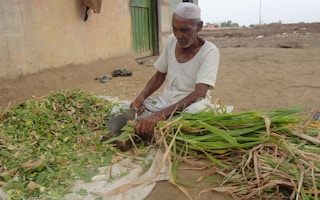India’s small farmers are better equipped than large landowners to deal with climate change, but need more support to find innovative ways to minimise the impacts of higher temperatures, uneven rainfall, floods and droughts, analysts said.
About 60 per cent of India’s population of 1.3 billion depends on agriculture for a living. More than three quarters of farmers cultivate than 2 hectares (5 acres) of land each.
While the small size of the land holding is often seen as a challenge to raising incomes, it is an advantage when it comes to tackling extreme weather and rising temperatures, said Arindom Datta, Asia head of sustainability banking at Rabobank.
“Large farmers tend to do mono cropping, which is far more vulnerable to climate change, and more difficult to change and adapt as the situation demands. Plus they need more water, another resource under threat from warmer weather,” he said.
“Small farmers are far more versatile; they usually plant multiple varieties of crops, so they are more flexible and better able to adjust and adapt,” he told the Thomson Reuters Foundation.
Prime Minister Narendra Modi has promised to double farmers’ incomes over the next five years, with reforms including better irrigation, crop insurance and higher prices for crops.
Poor prices for grains and cereal have led to mounting piles of debt for Indian farmers, triggering thousands of suicides every year.
“
With rising temperatures, we may not be able to grow basmati rice or wheat 20 years from now; we need to revive traditional grains that are more climate resilient.
Ishira Mehta, founder, CropConnect Enterprises
More than two-thirds of farmers who committed suicide were small and marginal farmers, data show.
The average size of land holdings in rural India has halved over the past two decades as land is passed down from father to son, and as more land is surrendered for development projects.
While a law caps the amount of land that can be owned by individual farmers, several states have introduced leasing laws to enable farmers to increase the land under cultivation.
But smaller land holdings are better suited if the government invests in training - particularly for women - on topics such as traditional grains such as millets, said Ishira Mehta, founder of CropConnect Enterprises, which links farmers to markets.
“With rising temperatures, we may not be able to grow basmati rice or wheat 20 years from now; we need to revive traditional grains that are more climate resilient,” she said.
“Women farmers in particular are more adaptable, more willing to learn about new harvest and marketing methods. But they cannot tackle the problem on their own.”
This story was published with permission from Thomson Reuters Foundation, the charitable arm of Thomson Reuters, that covers humanitarian news, women’s rights, trafficking, property rights, climate change and resilience. Visit http://news.trust.org)










